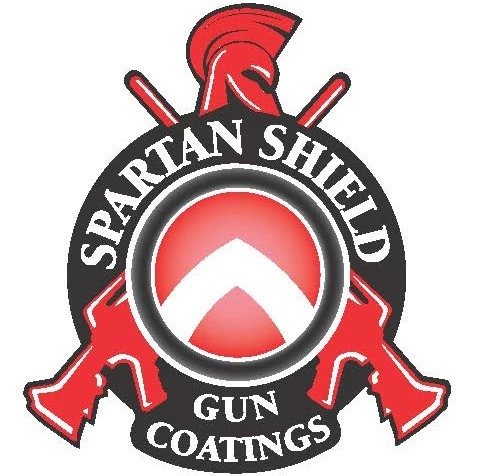INSTRUCTION AND PREPARATION MANUAL
PLEASE THOROUGHLY READ THE INSTRUCTIONS AND WARNINGS BEFORE USING
Spartan Shield RECOMMENDATIONS FOR PREPARATION OF ‘METAL SUBSTRATES’ FOR PAINTING
These procedures are recommended to obtain a suitable surface for painting.
The surface to be painted should be;
- Stir paint thoroughly with mechanical agitation. i.e., 120 aluminum oxide sand blast
- Use Acetone to soak the substrate for 15 minutes.
- Use a Dry and free of any type of moisture or condensation Air supply.
- Use an area that is Free of any dirt, dust or air born contaminants.
- Your substrate should be Free of any oil, cutting oil, lubricants, drawing compounds, etc.
- Your substrate should be Free of rust, corrosion.
The conditions listed above can normally be obtained by wiping all surfaces with a lint-free rag dampened with solvent. The rag should be changed often to prevent oil build-up/saturation.
Suitable solvents would be acetone, xylene, or Toluene. * Commercial metal cleaning preparations may be suitable but must be checked for compatibility with the coating.
The use of compressed air for blow-off is recommended as a final step. The air used must be void of any moisture or oil.
Shake the container for 5 minutes to ensure no settling.
- Paint temperature should be 60°F – 75°F
- Measure viscosity (18-20 sec. / #2Zaln)
- Do not add reducer or thinner to paint.
APPLICATION
- Parts must be clean and dry. (See Metal Prep)
- The surface temperature of paint should be between 60-75°F
- All application equipment should be clean.
- For HVLP application use the following settings:
15-25 PSI-Fluid
30-40 PSI-Air
- Paint should be applied evenly at the rate of 9-12 mil-WET and .9-1.2 mils-DFT.
- Paint must air dry for 30 minutes at room temperature before handling.
- Paint must be cured using heat.
Bake Schedule
- Place in a cold or warm oven. Close the door and turn the oven on.
- Bake for 1 hour at 500°F or 2 hours at 350°F.
- Do not start the timer until the oven has reached a set temperature.
- Turn oven off once time has elapsed and allow to cool with door slightly open.
CLEAN-UP
- All paint equipment should be cleaned and flushed thoroughly using strong solvents such as Toluene or ACETONE.
- Keep paint tightly covered when not in use.
STORAGE
- Paint must be stored in an area approved for flammable liquids.
- Storage temperatures should NOT be <45°F
- Paint should be used within 24 months from manufacturer's date.
Care must be taken to;
- Not to contaminate the surface with any type of lubricants, or preparations such as WD-40, Lock-Tight, Anti-Seize, caulk, and sealants.
- Not to contaminate with body oils. Latex or Nitrile gloves should be worn.
- Not to have any operations in the vicinity, such as grinding or sanding, that would emit particulate of any type.
- Make sure that the surface temperatures are within the recommended range. If these procedures are followed, they should yield a suitable surface for painting.
* CAUTION: Rags soaked with oil and solvent must be handled with caution and in accordance with NFPA recommendations.
Trouble Shooting Guide for Air Dry Coatings Dry spray
This condition appears as a dry, powdery, rough, sandpaper-type finish on the substrate. This condition is generally caused by the following:
- Holding the spray gun too far away from the substrate.
- Higher than normal temperatures during the coating process.
- The substrate being too hot.
- Having the air pressure set to high on the spray gun.
- Having the paint volume feed set to low on the spray gun. Fisheyes or Pinholes- This condition appears as small holes, craters or pinholes in the surface of the paint that reach the substrate. This condition is generally caused by the following:
- Dirty or oily substrate.
- Airborne contaminants that contaminate the substrate.
- Contaminants added to the paint from dirty or contaminated spray equipment.
- Incompatible or contaminated reducers or solvents.
- Contaminated cleaning systems.
Sagging
This condition appears as a heavy wet film that runs or sags on vertical surfaces. This condition is generally caused by the following:
- Holding the spray gun too close to the substrate.
- Slow passes with the spray gun.
- Holding the spray gun stationery during the painting process.
- Low paint viscosity.
- Reducing solvents that evaporate too slowly.
Blushing
This condition appears as a white or ashen look to the dried paint film. This condition is generally caused by the following:
- A weak or incompatible reducing solvent.
- Painting during high humidity conditions.
- Moisture contamination of the paint system.
Overspray
This condition appears as a dry powdery finish usually found on surfaces that have already been painted. This condition is generally caused by the following:
- Paint systems that dry too fast.
2. Poor spray booth exhaust conditions that allow the spray mist to settle on surfaces that have already been painted.
- Improper spray technique.
Corrective Measures
- Make sure the paint has been agitated properly.
- Check the viscosity of the paint and compare it to the paint specification.
- Make sure the substrate is clean and dry.
- Check the film thickness of the paint.
- Correct improper spray techniques.
- Check air pressure and volume feed settings on the spray gun.
Contact Us Today
Spartan Shield Coatings is a brand of Crossroads Coatings INC.
Location
208 Bucks Industrial Road
Statesville, NC 28625

